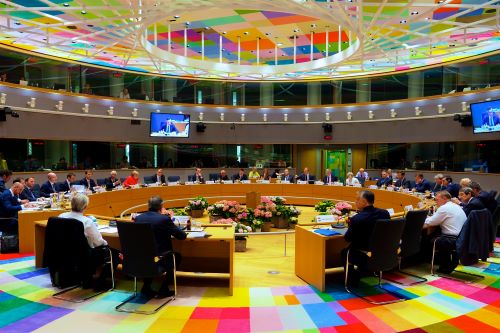Urban wastewater Directive: European Council adopts new rules for more efficient treatment
- November 7, 2024
- Posted by: Elaine Coles
- Category: Environmental, Europe

The European Council has given the final green light for a revised EU directive on urban wastewater treatment.
The revised directive extends the scope to smaller agglomerations, covers more pollutants, including micropollutants, and contributes to energy neutrality.
The new rules are one of the key deliverables under the EU’s zero-pollution action plan.
More agglomerations and more pollutants covered
According to the revised directive, member states must collect and treat wastewater from all agglomerations above 1 000 population equivalents – a measurement used to calculate urban wastewater pollution – according to EU minimum standards (instead of the threshold of 2 000 population equivalents set in the previous rules).
To better tackle the pollution and to prevent discharges of untreated urban wastewater into the environment, all agglomerations between 1 000 and 2 000 population equivalents need to be provided with collecting systems and all sources of domestic wastewater need to be connected to these systems by 2035.
For such agglomerations, by 2035 member states will have to remove biodegradable organic matter from urban wastewater (secondary treatment) before it is discharged into the environment. Derogations will apply to member states where the coverage of the collecting systems is very low and therefore would require significant investments. Member states that have joined the EU more recently and have already made more recent significant investments to implement the current directive (i.e. Romania, Bulgaria and Croatia) can also benefit from derogations.
By 2039, the removal of nitrogen and phosphorus (tertiary treatment) will be mandatory for urban wastewater treatment plants treating urban wastewater with a load of 150 000 population equivalents and above. For those urban wastewater treatment plants, by 2045 member states will have to apply an additional treatment to remove micropollutants, known as quaternary treatment.
Micropollutants
Producers of pharmaceuticals and cosmetics – the main source of micropollutants in urban wastewater – will need to contribute a minimum of 80% of the additional costs for the quaternary treatment, through an extended producer responsibility (EPR) scheme and in accordance with the ‘polluter pays’ principle.
Towards energy neutrality
The urban wastewater treatment sector could play an important role in significantly reducing greenhouse gas emissions and helping the EU achieve its climate neutrality objective. The new rules introduce an energy neutrality target, meaning that by 2045 urban wastewater treatment plants treating a load of 10 000 population equivalents and above will have to use energy from renewable sources generated by the respective plants.
Next steps
The formal adoption marks the final step in the ordinary legislative procedure. The directive will now be signed and published in the Official Journal of the EU. It will enter into force on the 20th day following publication.
EU member states will then have up to 31 months to adapt their national legislation and transpose the directive to take account of the new rules.
The urban wastewater treatment directive was adopted in 1991. The objective of this directive was to ‘protect the environment from adverse effects of wastewater discharges from urban sources and specific industries’.
The Commission conducted an evaluation of the directive in 2019 which confirmed that the previous directive had proven highly effective in reducing water pollution and improving the treatment of wastewater discharges over the last three decades.
However, it also showed that there were still sources of pollution that were not yet being adequately addressed by the existing rules. These included pollution from smaller agglomerations and a broad spectrum of harmful micropollutants. Additionally, the evaluation highlighted the urban wastewater sector as one of the largest consumers of energy in the public sector.
